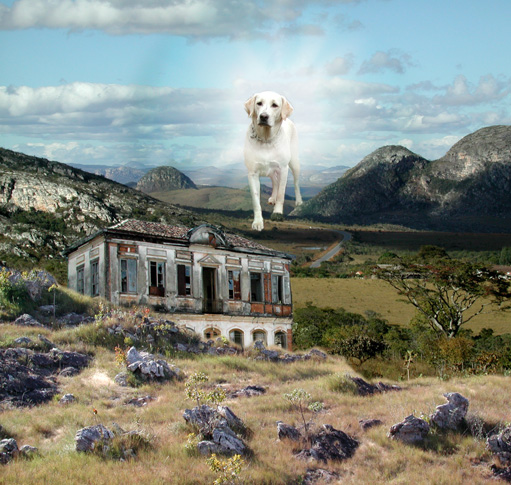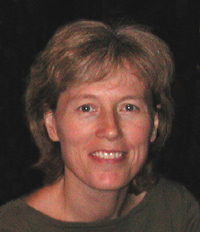
DV Edge Interview
USC Professor Discusses Work, Students
Interview with Vibeke Sorensen, Founding Chair and Professor, Division of Animation and Digital Arts, at the USC School of Cinema-Television
Part One of a Two-Part Interview
T he School of Cinema-Television at the University of Southern California is world-renowned for the quality of its programs and graduates. In the first part of a two-part interview, DV Edge talks to Prof. Vibeke Sorensen, Founding Chair of the Division of Animation and Digtal Arts at the school.
Preparing for such an interview, one finds a statement within the division's section of the USC website that “there is a need for skilled artists who have the complex artistic and technical background required by the animation industry and the new global, digital environment. The truly exceptional professional needs a complex mix of qualities: talent, technical skills, adaptability, conceptual sophistication and visual imagination.” This statement leads naturally to finding out what Prof. Sorensen was working on…
Vibeke Sorensen: I'm working on a new piece called “Sanctuary” supported by the Rockefeller Foundation, Intel Corporation, the Zumberge Fund at USC, and the Federal University of Minas Gerais in Belo Horizonte, Brazil. Prof. Heitor Capuzzo's “midiaarte” Laboratory there is helping with the project.

From Sanctuary, in Brazil
(c) 2002 Vibeke Sorensen
Produced at USC and UFMG
"Sanctuary" is an interactive architectural installation based on cross-cultural interpretations of what sanctuary means. It includes images and sounds of sacred and spiritual spaces from around the world including temples, churches, and mosques, but also other kinds of sanctuaries, especially natural.
Sorensen Discusses Art, Students

DV Edge: Do you have specific goals for this piece?
VS: Yes, one of my goals is to create a space where people are more in touch with the physical world, including their own senses, while simultaneously transcending it to a meditative or even metaphysical state. The idea is to foster harmony between the mind and body, and human beings and the world, through a dynamic multimodal process. Another goal is to reflect the universal need for peace and safety, and to foster this awareness through heightened sensitivity to the environment and other people. Hopefully it will help us to see our common humanity and develop empathy for other living things.
It features four screens with digital photography, video and spatial sound as well as real-time 2D and 3D processing of those materials. In a way, it's my answer to virtual reality.
DV Edge: A combination of the natural and high-tech.
VS: Well, it foregrounds nature and people, and backgrounds all the technology so it looks low-tech, but it's not. I'm using plants and organic materials, as well as wireless technology and ubiquitous computing, with touch interaction—no keyboards or mice—and we're developing special sensors for it, so it seems magical.
DV Edge: So this works seems to bridge technology and the artistic impulse. Is there such a wide gap between the two? Do these two things describe polar extremes?
VS: My point of view is that technological and humanistic education have traditionally been separated, the arts vs. the sciences. Certainly this has clearly been seen in the European system, where usually art was off in the academy and not even part of the university.
This history separates them more than the human mind naturally would. It's interesting that many scientists with whom I've worked think of themselves as artists in their field. They are very creative, often just as creative (as artists). And many artists use the scientific method in their work (they call it "experimentation.") They could call themselves scientists, but they don't.
DV Edge: So you bring the two together.
VS: Well, we try to. Our emphasis is on the making of cinematic artwork, but we want our students to innovate. We think people can have great vision coming from any kind of background, and a great imagination coming from any kind of background. But of course they're also going to need visual language.
DV Edge: By this you mean…
VS: For example, there are people who have never had art history, who have fantastic visual imagination. But usually people with a good background in art history have a bigger visual language , a vocabulary, that they can draw from.
And if were talking about good taste, it helps to have had some exposure to that!
DV Edge: So after spending several years in this educational and intellectual environment, what do USC students pursue after graduation?
VS: A lot of them go into the animation industry, not surprisingly, but there's often a cyclic nature to this. For example (many students today are being hired by) animation companies such as Disney, Dreamworks, Nickelodeon, and Warner Brothers. Others are going into visual effects houses—Sony Pictures Imageworks, Digital Domain, for example—into the computer animation companies Rhythm and Hues and Pacific Data Images, and some go up to Pixar and ILM. Others start their own companies.
It's interesting to see that a couple also went into research.
DV Edge: Why's that?
VS: Well, in the past people in research positions at major compute
r companies and centers came only from computer science. Now those places understand better the role artists can play in research, plus some of our students bridge the technology and the content so well and so fluidly that they've been sought after for some of the very few positions in collaborating with computer scientists. This includes, for example, Microsoft over the last decade, and more recently our own Integrated Media Systems Center (IMSC) and Institute for Creative Technology (ICT) at USC.
Other students go into teaching, especially our international students, who often go back to teach or work in their local communities and industries.
DV Edge: How many international students do you have?
VS: Our division has the highest percentage in the Cinema School at USC, fluctuating between 40 and 60 percent, and come from all over the world. And we'd like to have more from an even wider variety of countries and cultures because we need their point of view.
We need to know what people think about digital media from a global and multicultural perspective. How is it being used here and around the world, and is it helping to solve problems and lift the human spirit, or does it make problems? We are open to seeing things from multiple points of view with new eyes, and with a conscience. We want our students to help make the world a better place for everyone, and more intelligent.
DV Edge: And it's your job to teach them how to do this.
VS: We look at every person as having the potential to being really creative and really talented. But they need some education and they need to demonstrate it to us, and we will help them to build on it. That said, sometimes people who are really creative with technology will make new visual and artistic ideas possible. Then we can all think differently when we understand those new processes.
The converse is also true. Some people with great visual and artistic imaginations can push the technology to do things it could never do before. So at USC, we're interested in seeing that innovation and invention fromboth sides. And there is a continuum in between.
But the work, in the end, has to stand up as some kind of sophisticated moving image and cinematic experience, because that's the nature of our program.
Note: Vibeke Sorensen is Founding Chair of the Division of Animation and Digital Arts ( http://anim.usc.edu/ ) at the University of Southern California ( http://www.usc.edu/ ), in Los Angeles. She is widely known as an innovative artist working with video, film, computer graphics and interactive multimedia systems.
Her work has received many honors and has been shown internationally on television, in galleries, museums, and live performance. Her work has been supported by the Rockefeller Foundation, Intel Corporation, and the Annenberg Center for Communication at USC. She is a Zumberge Fellow at USC, and a Senior Fellow at the San Diego Supercomputer Center, where in 1989, she received a multi-year National Science Foundation grant with Dr. Lynn Teneyck, UC San Diego computational biologist, for research in Interactive Stereoscopic Animation. They created an interactive 3D computer animation system, and Sorensen produced Maya, a stereoscopic computer-animated work that has been exhibited internationally. Panini Stickers (1995) is a neo-dadaist work made in collaboration with Professors Ed Harkins and Phil Larson of UCSD's Dept. of Music, and combines live action and computer backgrounds. For more information, please see http://vibeke.info
(c) 2003